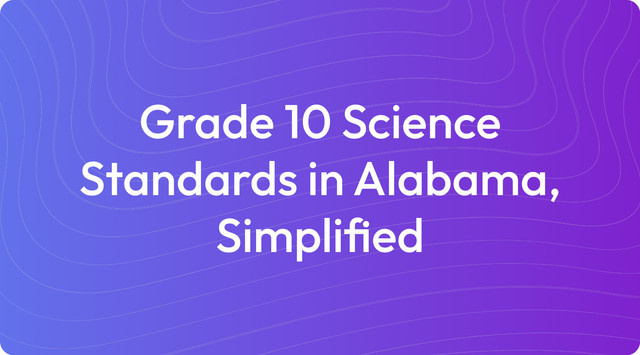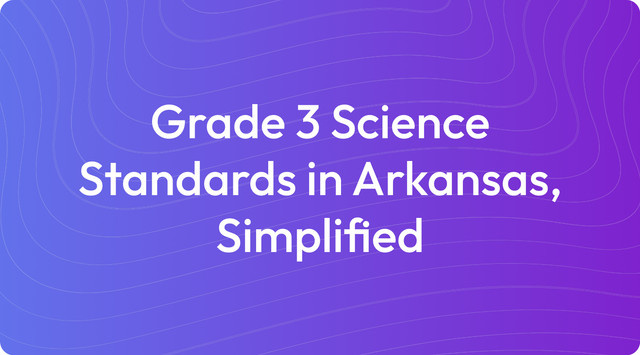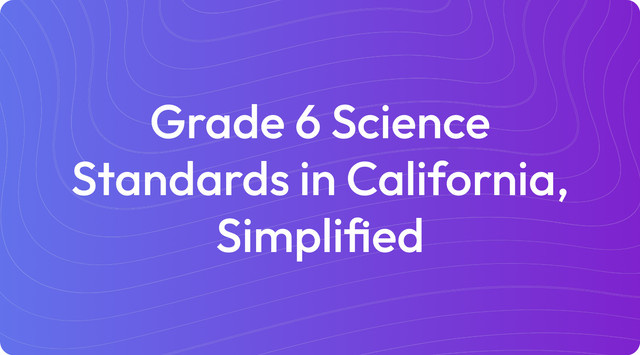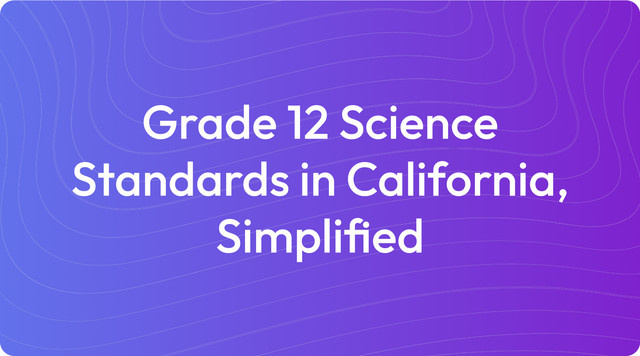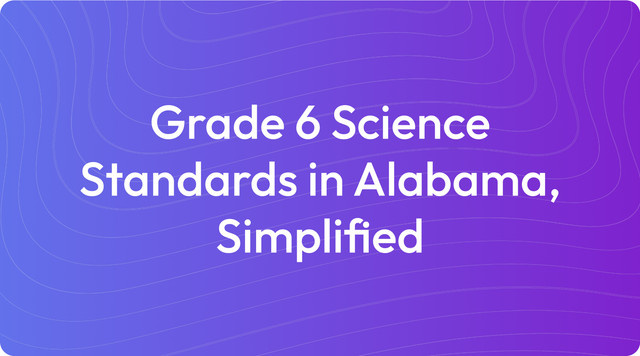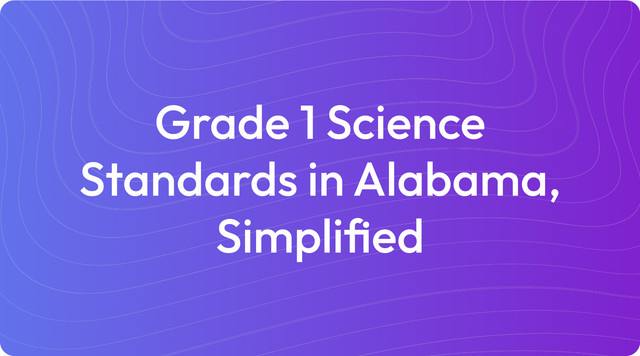Grade 2 Science Standards in Alaska, Simplified
Grade 2 science in Alaska explores matter, plants, animals, and Earth’s processes. For a quick overview, read more on TeachShare!
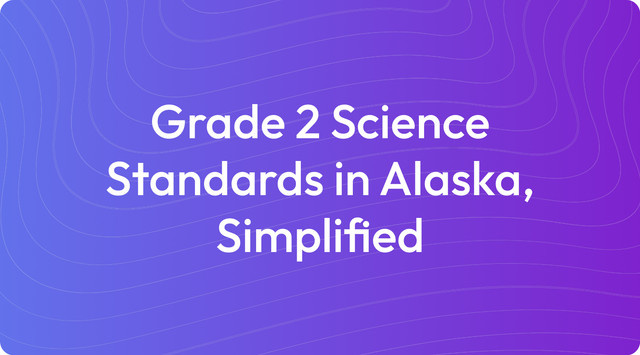
We understand that creating a clear and effective curriculum can be a complex task. Educational standards are designed to provide a foundational framework for what students should learn at each grade level. Think of them as a roadmap that helps guide instruction and ensures students are building knowledge consistently year after year. Let's explore what this looks like in practice.
Education standards are learning goals that outline what students are expected to know and be able to do at a specific grade level. For teachers, they provide clear benchmarks for student progress without dictating specific teaching methods or materials. For example, the Grade 2 Science Standards in Alaska specify that students should be able to plan an investigation to see if plants need sunlight, but leave the design of the activity up to you.
What Are Grade 2 Science Standards in Alaska?
The Grade 2 Science Standards in Alaska, based on the Alaska Science Standards, focus on building foundational skills in Physical Science, Life Science, Earth and Space Science, and Engineering Design. These standards emphasize hands-on exploration, observations of natural phenomena, and problem-solving to foster curiosity and scientific thinking among young learners. Here is a breakdown of the core standards:
1. Physical Science (PS): Matter and its Interactions
- Standard 2-PS1-1: Plan and conduct an investigation to describe and classify different kinds of materials by their observable properties (e.g., texture, color, hardness, flexibility).
- Standard 2-PS1-2: Analyze data obtained from testing different materials to determine which materials have the properties that are best suited for an intended purpose.
- Standard 2-PS1-3: Make observations to construct an evidence-based argument that some changes caused by heating or cooling can be reversed and some cannot.
2. Life Science (LS): Ecosystems and Biodiversity
- Standard 2-LS2-1: Plan and conduct an investigation to determine if plants need sunlight and water to grow.
- Standard 2-LS2-2: Develop a simple model that mimics the function of an animal in dispersing seeds or pollinating plants.
- Standard 2-LS4-1: Make observations of plants and animals to compare the diversity of life in different habitats.
3. Earth and Space Science (ESS): Earth’s Processes
- Standard 2-ESS1-1: Use information from several sources to provide evidence that Earth events can occur quickly or slowly (e.g., volcanic eruptions vs. erosion).
- Standard 2-ESS2-1: Compare multiple solutions designed to slow or prevent wind or water from changing the shape of the land.
- Standard 2-ESS2-2: Develop a model to represent the shapes and kinds of land and bodies of water in an area.
4. Engineering Design (ETS): Problem-Solving
- Standard K-2-ETS1-1: Ask questions, make observations, and gather information to define a simple problem that can be solved through engineering.
- Standard K-2-ETS1-2: Develop a simple sketch, drawing, or model to illustrate how the shape of an object helps it function.
- Standard K-2-ETS1-3: Analyze data from tests of objects or tools to determine which solution works best.
Key Learning Goals for Grade 2 Science in Alaska
- Observation and Investigation: Students learn to observe, ask questions, and test ideas to build understanding of natural processes (e.g., what plants need to grow).
- Hands-On Exploration: Through experiments and model-building, students explore matter, habitats, and Earth’s processes.
- Real-World Problem-Solving: Students design and test solutions for real-world problems, such as preventing erosion or building a strong structure.
- Connection to Alaska’s Environment: Students explore Alaska-specific examples, such as erosion in rivers, tundra habitats, and plant growth under unique daylight conditions.
The framework for these standards is guided by the Science Standards for Alaska, which are adapted from the national Next Generation Science Standards. This approach helps ensure that students are learning foundational science concepts that are both locally relevant and aligned with broader educational goals.
Key Tested Standards
While the official Alaska Science Assessment is administered in later grades, the Grade 2 standards are foundational for classroom and local assessments. These key standards are designed to be assessed through hands-on activities, observation, and problem-solving tasks. Here are the core standards you can expect to focus on:
1. Physical Science (PS): Matter and Its Interactions
- Standard 2-PS1-1: Plan and conduct investigations to describe and classify different kinds of materials by their observable properties.
- Standard 2-PS1-2: Analyze data obtained from testing different materials to determine which materials have the properties that are best suited for an intended purpose.
- Standard 2-PS1-3: Make observations to construct an evidence-based argument that some changes caused by heating or cooling can be reversed and some cannot.
2. Life Science (LS): Ecosystems and Biodiversity
- Standard 2-LS2-1: Plan and conduct an investigation to determine if plants need sunlight and water to grow.
- Standard 2-LS2-2: Develop a simple model that mimics the function of an animal in dispersing seeds or pollinating plants.
- Standard 2-LS4-1: Make observations of plants and animals to compare the diversity of life in different habitats.
3. Earth and Space Science (ESS): Earth’s Processes
- Standard 2-ESS1-1: Use information from several sources to provide evidence that Earth events can occur quickly or slowly.
- Standard 2-ESS2-1: Compare multiple solutions designed to slow or prevent wind or water from changing the shape of the land.
- Standard 2-ESS2-2: Develop a model to represent the shapes and kinds of land and bodies of water in an area.
4. Engineering Design (ETS): Problem-Solving
- Standard K-2-ETS1-1: Ask questions, make observations, and gather information about a situation people want to change to define a simple problem that can be solved through the development of a new or improved object or tool.
- Standard K-2-ETS1-2: Develop a simple sketch, drawing, or physical model to illustrate how the shape of an object helps it function as needed to solve a given problem.
- Standard K-2-ETS1-3: Analyze data from tests of two objects designed to solve the same problem to compare the strengths and weaknesses of how each performs.
The standards listed above are based on the official Science Standards for Alaska, which are adapted from the national framework provided by the Next Generation Science Standards.
Example Learning Objectives for Unit Planning
Learning objectives break down broad standards into specific, measurable goals for a single lesson or unit. They clarify what students should be able to do by the end of an instructional period, making it easier for you to design focused activities and assessments.
To help with your unit planning, here are example learning objectives for the Grade 2 Science Standards in Alaska. These are written in student-friendly “I can” statements and are aligned with the core standards for Physical Science, Life Science, Earth and Space Science, and Engineering Design.
Physical Science (PS): Matter and Its Interactions
- I can investigate and describe the properties of materials, like texture, hardness, and flexibility.
- I can test materials to find out which ones are best for building something, like a bridge or a roof.
- I can explain which changes caused by heating or cooling can be reversed (like melting ice) and which cannot (like cooking an egg).
Life Science (LS): Ecosystems and Biodiversity
- I can investigate and explain if plants need sunlight and water to grow.
- I can create a simple model to show how animals help plants grow, like bees pollinating flowers or animals spreading seeds.
- I can compare the plants and animals living in different habitats, like forests, tundras, or oceans.
Earth and Space Science (ESS): Earth’s Processes
- I can explain the difference between Earth events that happen quickly (like volcanic eruptions) and slowly (like erosion).
- I can test and compare different ways to stop wind or water from changing the land, like using walls, plants, or rocks.
- I can create a model to show shapes of land and bodies of water, like mountains, rivers, and lakes.
Engineering Design (ETS): Problem-Solving
- I can ask questions and make observations to figure out a problem that I want to solve, like building a shelter for a plant.
- I can use drawings or models to show how my idea works.
- I can test my design and make changes to improve it, like building a stronger bridge or a better roof.
Key Changes & Updates
The Grade 2 Science Standards in Alaska have been updated to encourage a more hands-on, inquiry-based approach to learning. Instead of just reading about concepts, students are now expected to actively investigate scientific ideas through experiments and observation. A key part of this change is the integration of Engineering Design, which challenges students to design, test, and improve solutions for real-world problems. This method helps build critical thinking and makes science more relevant by connecting classroom activities to tangible challenges, like designing a tool to prevent erosion or testing materials for a specific purpose.
These updates also place a strong emphasis on connecting learning to Alaska’s unique environment, encouraging students to explore local ecosystems, habitats, and landforms. The standards promote cross-disciplinary learning by integrating science with literacy and math skills. For example, students may be asked to record their observations in a journal or use measurements to compare data from an experiment. This approach helps students develop stronger communication and data analysis skills while building a deeper appreciation for the science in their own backyard.
Create with TeachShare
We know that turning these standards into engaging, effective lesson plans takes time and creativity. Our platform is designed to support you by making it easier to develop high-quality, differentiated materials that align with Alaska's science standards. We handle the heavy lifting of resource creation so you can focus more on what you do best—teaching. Start creating standards-aligned instructional resources with TeachShare now.
Frequently Asked Questions
What are the main topics covered in Grade 2 Science in Alaska?
In Grade 2, the Alaska Science Standards introduce students to foundational ideas across several key areas. Here’s a look at the main topics you'll cover:
- Physical Science: Students explore the properties of different materials, investigate changes from heating and cooling, and test materials for certain uses.
- Life Science: This area covers what plants need to live, the role of animals in pollination and seed dispersal, and the variety of life in different habitats.
- Earth and Space Science: Learners will study how the Earth changes over time, both quickly and slowly, through processes like erosion and floods, and they'll explore ways to protect the land.
- Engineering Design: Young learners get to solve problems by designing, testing, and making improvements to simple models and tools.
What makes the Alaska Grade 2 Science Standards special?
The Grade 2 standards for Alaska have a few key features that help make science learning both effective and meaningful. They place a strong emphasis on:
- Hands-on learning: The standards encourage you to get students actively involved in investigating, testing, and exploring scientific ideas through experiments.
- Real-world connections: Lessons are designed to link science concepts to everyday situations, like figuring out how to prevent erosion or understanding changes in the local environment.
- Local relevance: A major focus is on Alaska’s own unique habitats and environmental conditions, which helps make the material more relatable for your students.
What are some examples of hands-on activities for Grade 2?
The standards are built around active learning. Here are a few examples of hands-on activities you can do with your second graders:
- For Physical Science: Have students test different materials to discover which are waterproof or best for building a strong structure.
- For Life Science: A classic experiment is to grow plants in different conditions, such as with and without sunlight, to see what they need to thrive.
- For Earth Science: Students can build their own small barriers to see how they can prevent erosion from simulated wind or water.
- For Engineering: Challenge your class to design a model that shows how an animal, like a bee, helps pollinate flowers.
How are students assessed in Grade 2 Science?
Assessment in Grade 2 science is about observing what students can do, not just what they can recall. You can gauge their understanding through a variety of methods, such as:
- Hands-on investigations: See how they perform when testing materials for a specific task or observing how plants respond to different environments.
- Models and designs: Have students create and test their own models, like a structure to stop erosion or a device that imitates seed dispersal.
- Journals and observations: Ask students to record what they see in science journals, noting changes like how a plant grows over time.
- Class discussions: Listen to how students explain their findings and describe how their designs work to solve a problem.
How can I make Grade 2 Science engaging for my students?
Keeping second graders excited about science is key. Here are some practical tips for making your science lessons more engaging:
- Use relatable, real-world examples like how plants grow in a garden or how local landforms change with the seasons.
- Incorporate plenty of hands-on experiments that allow students to actively explore scientific ideas for themselves.
- Encourage teamwork by having students collaborate on designing and testing solutions to problems.
- Bring concepts to life with visuals, short videos, and stories that illustrate ideas like biodiversity, habitats, or erosion.
Answer


